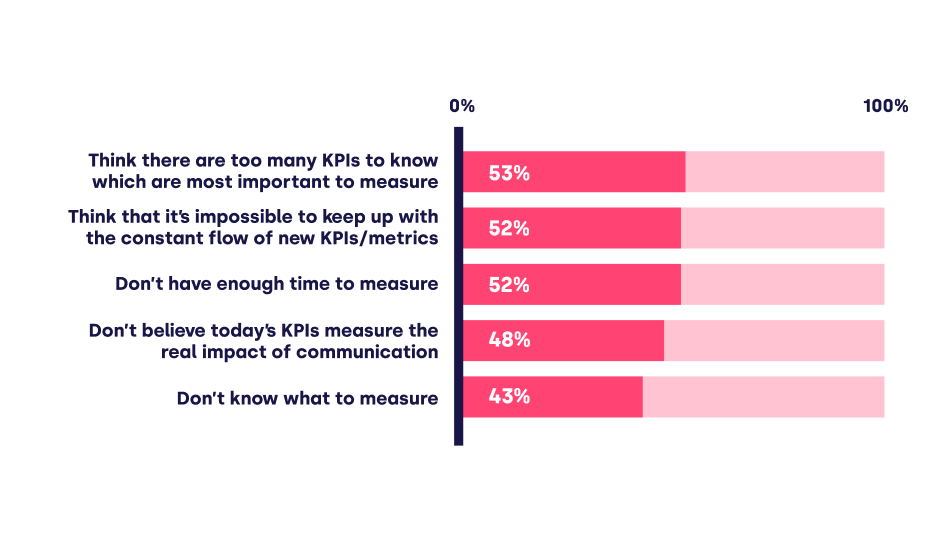How to make sure you own your data in 2023

When increased costs collide with shrinking media budgets, demonstrating the impact of efficient PR and communication takes on even greater importance for Nordic organizations.
Although Nordic PR and communication professionals recognize the importance of measuring their efforts, too many struggle to make sense of and utilize the data effectively. Now is the time to transition from being overwhelmed by the massive volume of data to confidently owning and harnessing its potential to drive success. This is how you make sure to own your data in 2023.
Data – an introduction
Owning and effectively managing data is critical for organizations as it empowers them to make better-informed decisions across all departments and levels. This provides an advantage that allows organizations to identify different opportunities, trends, and threats and compete more effectively. By owning and understanding data, organizations can create more personalized experiences, which enhances customer experiences, but also the sales process where data can help tailor different offerings, as well as being used to foster long-term relationships with existing clients.
Proper data ownership also enables organizations to streamline operations, optimize resources, and improve profitability. It ensures compliance with data protection regulations, such as GDPR, while reducing the risk of penalties and reputational damage. Owning data enables organizations to analyze performance, try out new ideas, and adapt growth and success strategies. If you want to learn more about how marketing departments can become GDPR compliant, download our latest guide here.

Financial Challenges and the Importance of Proving Impact
Recent world events have significantly impacted not only Nordic organizations but worldwide – particularly financially. Over half of the Nordic organizations have reported cuts to their media and communication budgets. Consequently, the need to demonstrate the effectiveness of communication efforts has become more critical than ever, with nearly six in ten professionals stating that recent events have increased the importance of proving impact.
The Measurement Mess and Data Doubts
Despite an evident need to create value using data, there is widespread confusion surrounding measurement in communication and PR. Professionals struggle with an ever-growing array of metrics and find time to measure their efforts effectively. Moreover, many still don’t know what to measure, resulting in widespread skepticism about the validity of current KPIs for assessing the real impact of communication. For example, almost half of the respondents in Mynewsdesk’s Nordic PR report don’t believe today’s KPIs measure the real impact of communication. Below, you’ll find some interesting numbers:

Addressing the Lack of Strategy, Follow-Up, and Transparency
A key reason behind the confusion around measurement is the absence of a well-defined plan or strategy for evaluating results. Less than four in ten PR and communication professionals report that their organization has a documented method or process for measuring results. Additionally, almost half of these professionals fail to take action based on the data they collect. Compounding these issues is a significant lack of transparency, with less than three in ten professionals sharing their results across the company.
- 39% have a documented plan/strategy for measuring results
- 47% don’t make use of/take action on the data they collect
- 31% share their results with the company
Expert Tips: How to Own Your Data
To help organizations transition from data overwhelm to actionable insights, data, and digitalization expert Thomas Mickeleit shares valuable advice:

Overcoming Data Silos
Data silos are prevalent in most organizations today, with information stored in isolated environments that hinder cross-functional collaboration. To better utilize data across the organization, it’s essential to identify common interests between departments and initiate joint projects.
Nominating a Data Champion
Many professionals feel lost in the measurement jungle because data lacks a dedicated “owner.” Identifying a data champion who can structure, visualize, and share data is crucial for ensuring that data is understandable and actionable for the entire team.
Starting Small with Pilot Projects
Although a strategic plan for using data is essential, launching a top-down data strategy can overwhelm an organization. Instead, start with a pilot project that offers quick wins, such as media analytics or editorial planning, and expand to other projects based on the learnings from the initial pilot.
Data and Content: Strengthening the Connection for Improved Results
Understanding its connection with content is vital to using data in communication and PR efforts. By effectively leveraging data insights to drive content strategies, organizations can create more targeted, engaging, and impactful content that resonates with their audience.
Data-Driven Content Creation
Harnessing the power of data can significantly enhance the content-creation process. By analyzing user behavior, preferences, and demographics, organizations can better understand their target audience’s needs and interests. This information can be used to create content that addresses those needs and engages the audience on a deeper level.

Personalization and Segmentation
Data allows organizations to personalize and segment their content, ensuring that each piece of content is tailored to a specific audience or demographic. By doing so, organizations can create content that speaks directly to their target audience’s unique interests and preferences, increasing the likelihood of positive engagement.
Performance Analysis and Optimization
Data can be used to analyze content performance across various platforms, channels, and formats. Organizations can optimize their content strategies by identifying trends and patterns in content performance to focus on high-performing topics, formats, and channels. This enables more efficient use of resources and increases the overall impact of content efforts.
Predictive Content Strategies
Data can also be used to predict future trends, enabling organizations to create content that aligns with their audience’s evolving interests. By staying ahead of the curve, organizations can maintain a competitive edge and establish themselves as thought leaders.
Tips for Connecting Data and Content
To effectively connect data and content, consider implementing the following strategies:
- Consolidate data sources: Integrate and consolidate data from various sources to create a holistic view of your audience and their preferences.
- Identify key content KPIs: Determine the most relevant KPIs for your content strategy, and use them to measure the success and impact of your content efforts.
- Create data-driven buyer personas: Use data to develop detailed buyer personas that represent your target audience segments and tailor your content to their unique needs and interests.
- Invest in data analysis tools: Utilize data analysis and visualization tools to simplify uncovering insights and trends from your data.
- Regularly review and update your content strategy: Continuously monitor your content performance and update your strategy based on new insights and changing audience preferences.
Summarized:
Data is often collected without being fully understood or utilized. To make better sense and use of data, organizations must foster transparency between departments and identify common interests. While improving data literacy is essential for communication professionals, not everyone can become a data expert. With PR Coverage Report, it is easier than ever to make data accessible for different stakeholders.
Identifying a data champion who can work dedicatedly with analyzing, structuring, visualizing, and sharing data will ensure the entire organization can understand and use data effectively. Data ownership is the key to unlocking the true potential of data-driven communication.
Finally, when it comes to data and content, they are intrinsically connected, and by effectively leveraging data insights, organizations can create more targeted, engaging, and impactful content. Embracing data ownership and understanding the relationship between data and content is essential for unlocking the true potential of data-driven communication and long-term success.